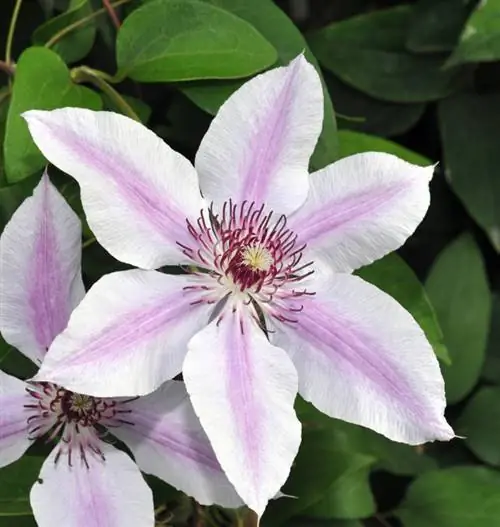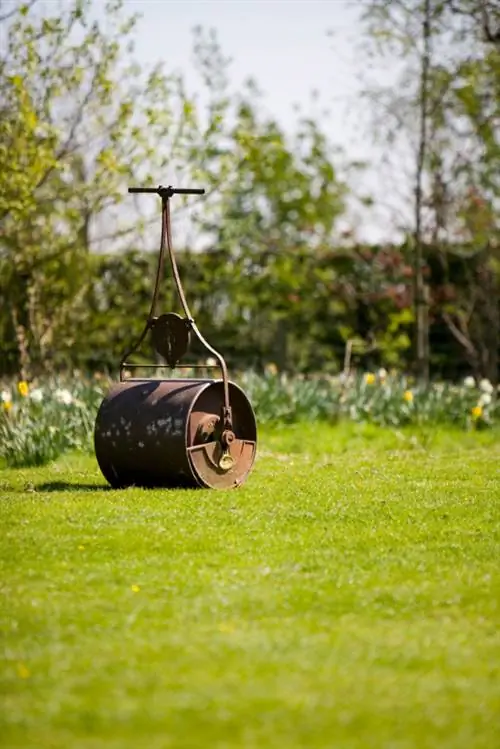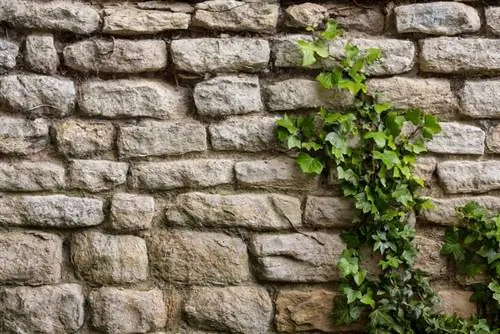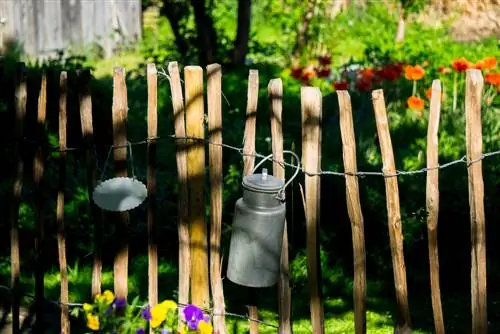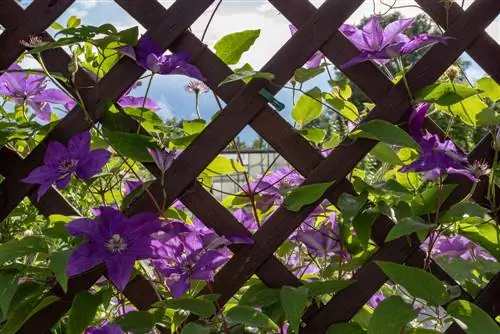- Author admin [email protected].
- Public 2023-12-16 16:46.
- Last modified 2025-01-23 11:20.
Fencing the garden is sometimes indispensable. With climbing clematis, the simplest garden fence is transformed into a flower-filled eye-catcher. Find out here how to plant clematis correctly for greening a fence.
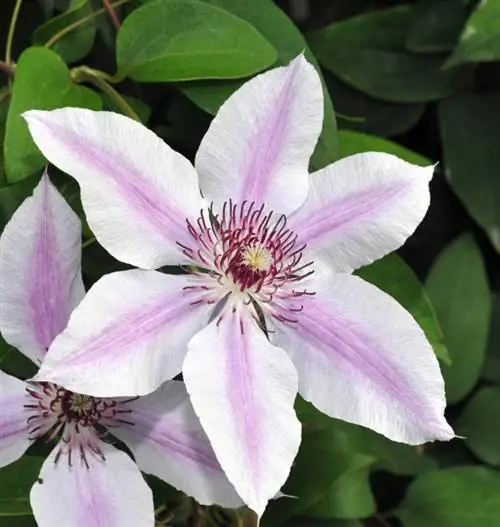
How to plant clematis for fencing?
To plant clematis to green a garden fence, loosen the soil deeply, enrich it with compost (€43.00 on Amazon) and horn shavings and dig a planting pit. Lay out a drainage layer of gravel, plant the clematis diagonally towards the fence and attach the tendrils to it. Shade the root area with mulch or underplanting.
When is it time to plant clematis in the garden?
As summer comes to an end, the ideal planting time for clematis begins. Since the ground is wonderfully warm, the clematis spreads its roots happily and starts the next year with a vital growth lead.
How is the soil prepared?
So that the clematis thrives on the garden fence, prepare the soil in these steps:
- Loosen the soil thoroughly, clean it of roots and stones
- Enrich the excavation with compost (€43.00 on Amazon) and horn shavings
- Dig a pit twice as deep as the root ball is long
Complete the preparations by spreading a layer of chippings or gravel at the bottom of the planting pit as drainage.
What planting distance is appropriate?
The selected variety determines the respective planting distance. As a rule, the value is between 80 and 150 centimeters. There is no distance to be maintained from the fence itself, as is the case for a climbing aid on the facade.
How does the planting work step by step?
In order to plant a clematis in an exemplary manner, some differences from other garden plants must be taken into account. How to do it right:
- Soak the still potted root ball in water until no more air bubbles appear
- Unpot the clematis and plant it so deep that 1-2 leaf buds come under the ground
- Align the root ball slightly diagonally towards the garden fence
- Press down the soil and water generously
- Where possible, attach the lower tendrils to the fence
Since a clematis loves its base to be shaded, finally spread a layer of mulch. Alternatively, plant small, low-competitive blue cushions, marigolds, asters, purple bells or appropriate perennials as underplanting.
Tips & Tricks
Creative hobby gardeners combine clematis with climbing roses because both types of plants harmonize perfectly with each other. The partnership will be perfect if you plant the roses 1-2 years before the vigorous clematis. If you then choose a summer-flowering variety, it can tolerate radical pruning in autumn and gives the climbing rose enough space.

